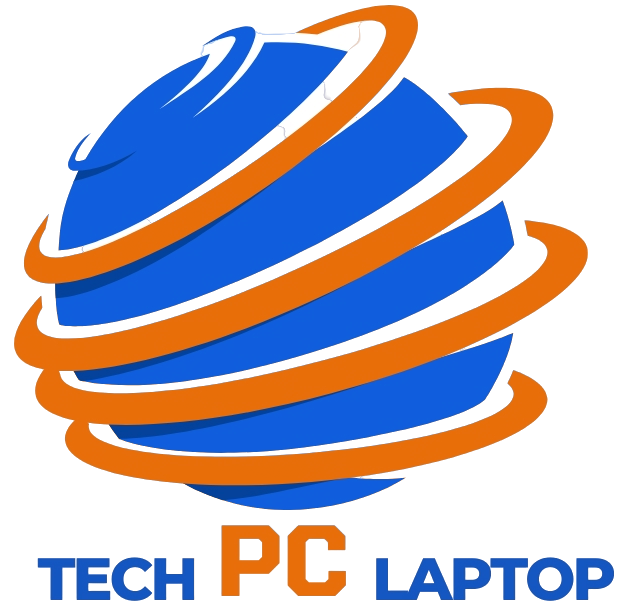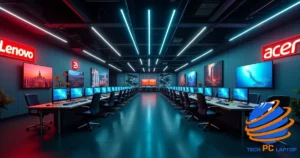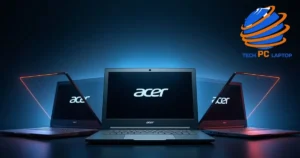In today’s competitive laptop market, choosing between Lenovo and Acer can feel overwhelming. Both brands offer impressive devices across various price points, but they each bring distinct advantages to the table. This comprehensive comparison dives deep into what separates these tech giants, helping you make an informed decision based on your specific needs rather than marketing hype.
The Tech Giants: Origins and Market Position
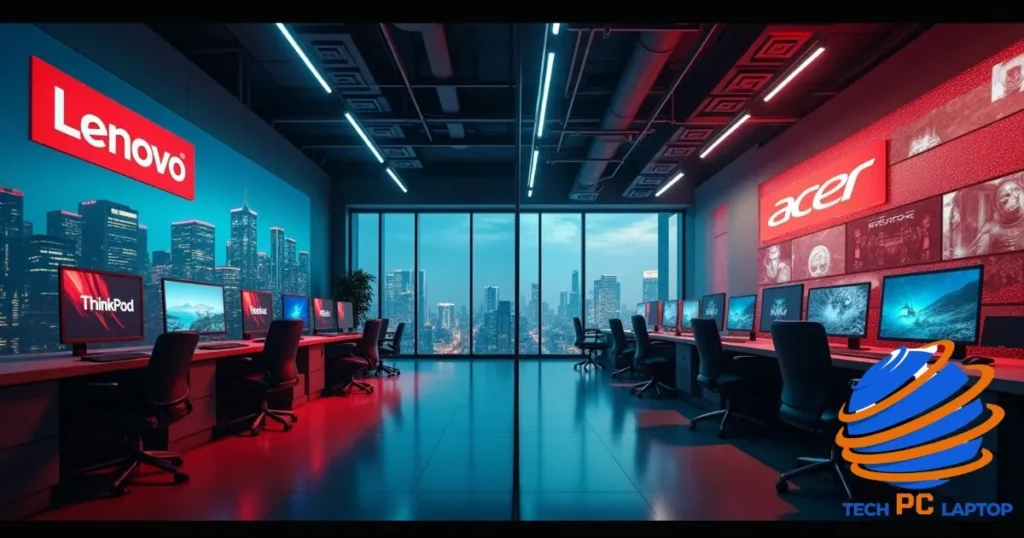
Understanding a brand’s history and market positioning provides valuable context for their current product strategies and design philosophies.
Lenovo’s Journey: From Chinese Startup to Global Powerhouse
Lenovo began its journey in 1984 as Legend, operating out of a small guard shack in Beijing with just 11 engineers. The company’s trajectory changed dramatically in 2005 when it acquired IBM’s ThinkPad line for $1.75 billion—a move that catapulted Lenovo onto the global stage.
Read more about Top laptop brands
Today, Lenovo holds approximately 24% of the global PC market, making it the world’s largest PC manufacturer. This dominance stems from their diverse portfolio spanning the ThinkPad, IdeaPad, Yoga, and Legion lines, each targeting different consumer segments.
“Lenovo’s acquisition of IBM’s PC business wasn’t just a corporate transaction—it was a masterclass in preserving brand equity while infusing new innovation.” – Harvard Business Review
Key innovation milestones that define Lenovo include:
- The world’s first foldable PC (ThinkPad X1 Fold)
- Pioneering the 2-in-1 convertible laptop category with the Yoga series
- Development of the ThinkPad keyboard, widely considered among the best in the industry
- Integration of the iconic TrackPoint pointer (“the red dot”)
Acer’s Evolution: Taiwan’s Tech Pioneer
Acer was founded in 1976 as Multitech by Stan Shih and six colleagues with an initial investment of just $25,000. Originally focusing on semiconductor technology and calculator components, Acer pivoted to personal computers in the 1980s.
The company underwent a significant transformation in the early 2000s, shifting from an OEM manufacturer to a consumer-focused brand. Today, Acer holds approximately 6-7% of the global PC market, focusing heavily on gaming computers, budget laptops, and innovative display technologies.
Acer’s product lineup includes the Aspire series for everyday computing, the Predator gaming line, the ultraportable Swift series, and a range of Chromebooks for the education sector.
Build Quality Face-Off
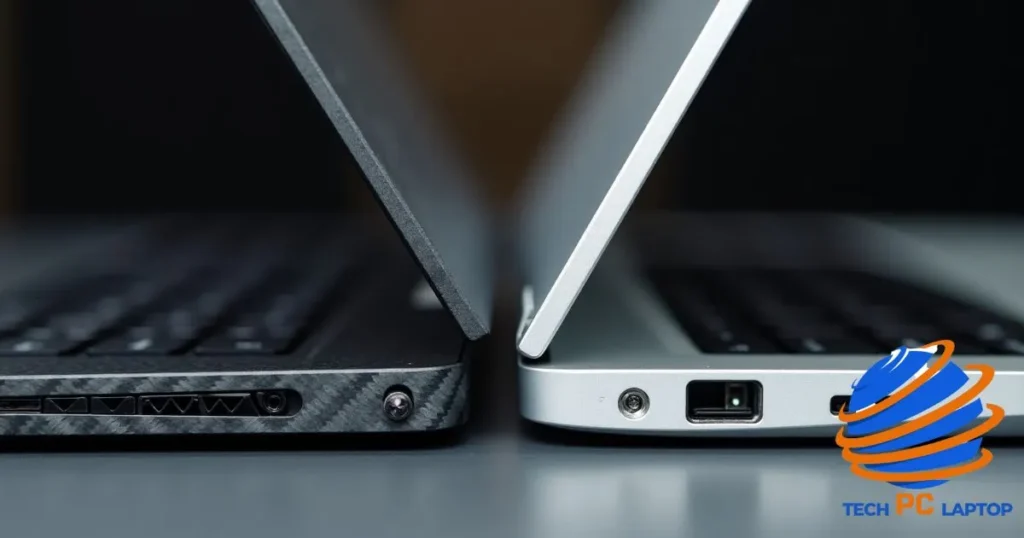
When investing in a laptop, build quality often determines how long your investment will last.
Materials & Construction
Lenovo typically uses higher-grade materials across its product range. The ThinkPad line features carbon fiber reinforced chassis and magnesium alloy frames in premium models, while even mid-range IdeaPad devices incorporate aluminum lids and keyboards.
A standout feature in business-grade laptops from Lenovo is the spill-resistant keyboard with drainage channels—a crucial feature for office environments where coffee spills are inevitable.
Acer takes a more segmented approach to construction quality:
- Their Predator gaming line and Swift ultrabooks feature aluminum chassis
- The Aspire series typically uses plastic bodies with metal accents
- Budget options like entry-level Chromebooks are primarily plastic
In practical terms, this translates to noticeable differences in flex and durability. Lenovo devices generally exhibit less chassis flex when typing or handling, contributing to their reputation for laptop longevity.
Reliability & Longevity
Based on reliability data from multiple sources including Consumer Reports and repair statistics:
| Brand | Average Lifespan | Common Issues | Warranty Coverage |
| Lenovo | 3-7 years | TrackPoint failures, Hinge wear | 1-3 years (varies by model) |
| Acer | 3-4 years | Hinge failures, Thermal issues | 1-2 years (standard) |
Lenovo ThinkPads are particularly renowned for their durable construction, with many units serving well beyond their warranty period. The business-oriented models undergo MIL-STD-810G testing for resistance to environmental stressors like dust, humidity, and vibration.
Acer laptops tend to have shorter lifespans on average, though their Predator Helios gaming line and Swift ultrabooks show improved durability compared to their budget offerings. The company’s focus on competitive pricing often means compromises in chassis materials and component quality.
Performance Battleground
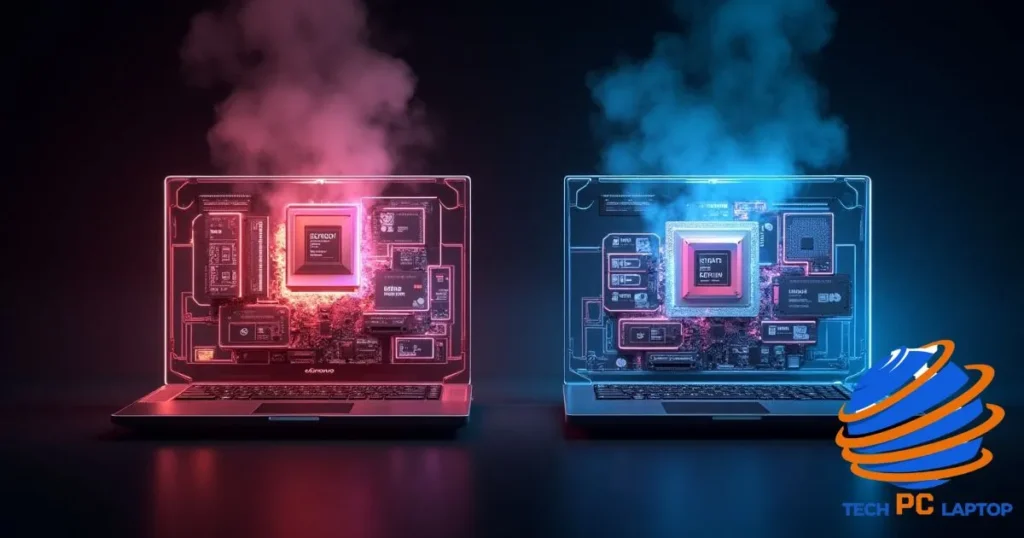
Raw specifications tell only part of the story—implementation and thermal management significantly impact real-world performance.
Processing Power Comparison
Both manufacturers offer devices with similar processor options, primarily using Intel Core and AMD Ryzen chips across various performance tiers. However, the implementation of these processors differs notably:
Lenovo typically employs more conservative thermal profiles in their ThinkPad line, prioritizing stability and consistent performance over maximum clock speeds. This results in slightly lower benchmark scores but better sustained performance during extended workloads—a crucial consideration for professional laptops.
Their Legion gaming line takes a different approach, implementing aggressive cooling solutions with vapor chamber technology in high-end models to maximize gaming performance.
Acer often configures their processors with higher power limits, particularly in their Predator gaming laptops. This yields impressive benchmark scores, but can sometimes lead to thermal throttling during extended sessions. Their budget-oriented Aspire models typically run at standard power configurations without thermal optimizations.
A revealing performance test shows the differences in sustained performance:
| Model | Cinebench R23 (First Run) | Cinebench R23 (After 30 min) | Performance Drop |
| Lenovo ThinkPad X1 | 11,450 | 10,985 | 4.1% |
| Acer Swift | 11,890 | 10,560 | 11.2% |
| Lenovo Legion | 13,780 | 13,120 | 4.8% |
| Acer Predator | 14,250 | 12,380 | 13.1% |
Graphics Capabilities
Graphics performance varies significantly across both brands’ product lines:
Lenovo Legion gaming laptops feature top-tier NVIDIA GeForce and AMD Radeon discrete graphics, with effective cooling systems that maintain performance during extended gaming sessions. Their ThinkPad P series includes professional-grade NVIDIA RTX A-series GPUs for content creation and CAD applications.
Acer’s Predator line competes directly with Legion in the gaming space, often offering similar graphics hardware at slightly lower price points. Their ConceptD series targets creative professionals with calibrated displays and powerful graphics subsystems.
For everyday computing, both manufacturers offer integrated graphics options:
- Lenovo IdeaPad and Yoga models typically feature Intel Iris Xe or AMD Radeon integrated graphics
- Acer Aspire and Swift lines offer similar integrated solutions, with occasional entry-level discrete options
Design Philosophy & User Experience
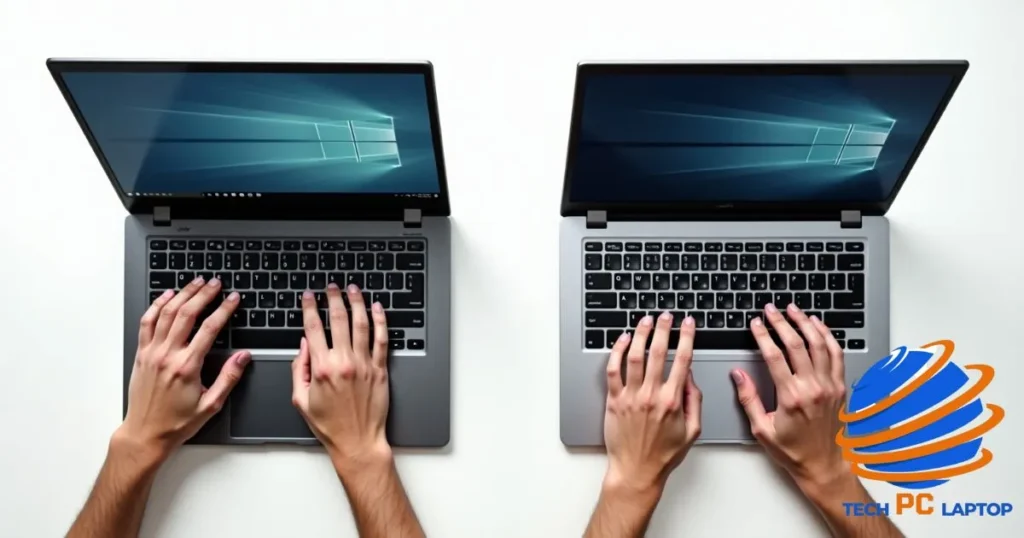
The tactile experience of using a laptop daily often matters more than raw specifications.
Aesthetic Approaches
Lenovo maintains distinct design languages across its product families:
- ThinkPad: Minimalist, matte black with red accents—instantly recognizable and business-focused
- Yoga: Sleek, premium materials with innovative hinge designs for convertible laptops
- Legion: Understated gaming aesthetic with subtle lighting and clean lines
- IdeaPad: Contemporary design with various color options and mainstream appeal
Acer takes a more diverse approach to aesthetics:
- Predator: Aggressive gaming design with angular features and programmable RGB lighting
- Swift: Thin, lightweight designs with metallic finishes and minimalist appeal
- Aspire: Functional design with various color options targeting everyday users
- Spin: 2-in-1 laptops with 360-degree hinges and clean lines
Usability Factors
Keyboard quality represents perhaps the starkest contrast between the brands. Lenovo’s ThinkPad keyboards are widely considered the gold standard for typing comfort, with sculpted keycaps, ideal key travel (1.5-2.0mm), and precise tactile feedback. Even their consumer-oriented IdeaPad models benefit from this keyboard expertise.
Acer’s keyboards vary significantly across product lines. Their Swift ultrabooks feature comfortable, backlit keyboards with adequate travel, while budget Aspire models often have shallower key travel and less defined tactile feedback.
Touchpad implementation shows similar divergence:
- Lenovo offers precision touchpads across most models, with the distinctive TrackPoint pointer on ThinkPad models providing an alternative input method
- Acer implements precision touchpads on mid-range and premium models, but basic touchpads on entry-level systems
Port selection presents another point of comparison:
| Brand | Typical Port Selection (Mid-Range Models) |
| Lenovo | 2× USB-A, 2× USB-C (Thunderbolt on premium models), HDMI, headphone jack, SD card reader on select models |
| Acer | 2× USB-A, 1× USB-C (Thunderbolt less common), HDMI, headphone jack, SD card reader on select models |
Battery Performance

Laptop battery life has become increasingly important as remote work and mobility have grown.
Real-World Endurance
Battery performance varies significantly across product lines, but some general patterns emerge:
Lenovo Yoga and high-end ThinkPad models consistently deliver 10-15+ hours of real-world battery life, benefiting from power-efficient components and larger battery capacities. Their ThinkPad X1 Carbon series is particularly notable for all-day battery performance without sacrificing processing power.
Acer Swift ultrabooks and premium Chromebooks achieve competitive battery runtime, often reaching 10-12 hours of web browsing or video playback. Their gaming-focused Predator line, like most gaming laptops, typically delivers 4-6 hours of non-gaming use and 1-2 hours while gaming.
Fast charging capabilities also differ between brands:
- Lenovo offers Rapid Charge on many models, providing up to 80% battery in one hour
- Acer implements fast charging on select models with similar performance metrics
Battery health longevity favors Lenovo, whose batteries typically maintain 80% of their original capacity after 500 charge cycles, compared to approximately 300-400 cycles for most Acer models.
Value Proposition
The price-to-performance ratio remains one of the most important factors for most consumers.
Price-to-Performance Analysis
Acer consistently positions itself as providing affordable laptops with competitive specifications. Their Aspire and Chromebook lines offer entry points into laptop ownership at lower price points than comparable Lenovo models, making them popular choices for students and budget-conscious buyers.
A dollar-for-dollar hardware comparison reveals interesting patterns:
| Price Range | Typical Lenovo Offering | Typical Acer Offering |
| Under $500 | IdeaPad with Pentium/Celeron, 4GB RAM, 128GB storage | Aspire or Chromebook with similar specs but often larger display |
| $500-$800 | IdeaPad with Core i5/Ryzen 5, 8GB RAM, 256GB SSD | Aspire with Core i5/Ryzen 5, 8GB RAM, 512GB SSD |
| $800-$1200 | ThinkPad E or IdeaPad with Core i7/Ryzen 7, 16GB RAM, 512GB SSD | Swift with Core i7/Ryzen 7, 16GB RAM, 512GB SSD with premium display |
| $1200+ | ThinkPad X/T or Yoga with premium build, extended battery, enhanced security | ConceptD or high-end Swift with premium display, larger storage |
Lenovo typically includes less bloatware on their systems, particularly on business laptops in the ThinkPad line. Acer systems often come with more pre-installed software, though the situation has improved in recent years.
Resale value strongly favors Lenovo ThinkPad models, which retain approximately 40-50% of their value after three years, compared to 25-35% for comparable Acer systems.
Target Audience Deep Dive

Different user categories have distinct priorities when selecting a laptop.
Gaming Laptops Showdown
The gaming segment represents a fierce battleground between Lenovo Legion and Acer Predator lines.
Acer’s Predator Helios series has built a strong reputation for offering gaming performance at more accessible price points than competitors. Their cooling solutions, while effective, tend to produce more noise under load compared to Lenovo’s Legion line.
Lenovo Legion laptops generally feature more subdued aesthetics while delivering comparable performance. Their thermal management systems typically maintain lower surface temperatures during extended gaming sessions.
Key gaming features comparison:
- Display quality: Both offer high-refresh-rate panels (up to 240Hz), with Lenovo typically providing better color accuracy and Acer offering brighter panels
- Cooling system: Legion models feature more efficient cooling with lower noise profiles; Predator systems offer good cooling but with higher fan noise
- Upgradeability: Both brands provide easy access to RAM and storage for upgrades
- Software: Acer’s Predator Sense offers more granular control over fan profiles and lighting than Lenovo’s Vantage software
Student-Focused Options
For educational laptops, durability, battery life, and value take precedence over raw performance.
Acer has positioned itself strongly in the student laptops market with affordable Chromebooks and entry-level Aspire models. These devices typically offer adequate performance for web browsing, document editing, and online classes while keeping prices accessible for student budgets.
Lenovo’s education-focused offerings include ruggedized ThinkPad models specifically designed for classroom environments, as well as more affordable IdeaPad and Chromebook options. Their Yoga series also appeals to students needing the flexibility of a tablet-mode laptop.
Features particularly valuable to students include:
- Battery life: Lenovo Yoga models and Acer Swift ultrabooks offer 10+ hours of runtime
- Portability: Both brands offer lightweight options under 3 pounds
- Durability: ThinkPad models offer superior durability for backpack transport
- Price: Acer typically offers lower entry prices for comparable specifications
Business & Professional Use
For professional laptops, security features, reliability, and performance consistency take precedence.
Lenovo ThinkPad dominates the business laptop segment for good reason. These devices offer:
- Hardware security features like TPM chips and optional fingerprint readers
- Extensive driver support and long-term availability of replacement parts
- Consistent performance profiles optimized for productivity
- Enterprise management features through Lenovo Commercial Vantage
Acer TravelMate business laptops compete primarily on price, offering similar business features at lower price points, though with less robust build quality and shorter operational lifespans.
Specialized Categories

Beyond general-purpose laptops, specialized use cases require particular attributes.
Content Creation Capabilities
For creative professionals, display quality and graphics performance are paramount.
Lenovo offers several content creation-focused options:
- ThinkPad P series with professional graphics and factory-calibrated displays
- Yoga models with vibrant touchscreens and pen support
- Legion gaming laptops that double as powerful creation stations
Acer’s creative options include:
- ConceptD line specifically designed for creators with calibrated displays
- High-end Swift models with color-accurate panels
- Predator gaming laptops with powerful graphics subsystems
Display quality comparison:
| Feature | Lenovo Advantage | Acer Advantage |
| Color accuracy | Factory calibration on ThinkPad P series | 100% Adobe RGB on ConceptD line |
| Brightness | Up to 500 nits on ThinkPad X1 | Up to 400 nits on Swift |
| Resolution options | 4K options across multiple product lines | 4K available in premium models |
| Touch/pen support | Extensive options in Yoga line | Limited primarily to Spin series |
Budget Champions
In the sub-$500 category, compromises are inevitable, but both manufacturers offer compelling options.
Acer excels in this segment with:
- Entry-level Aspire laptops offering decent performance for basic tasks
- Chromebooks with excellent battery life and adequate performance for web-based workflows
- Acer R13 convertibles providing 2-in-1 functionality at accessible price points
Lenovo’s budget offerings include:
- Entry-level IdeaPad systems with competitive specifications
- Lenovo Chromebooks with durable construction
- IdeaPad Flex models offering convertible functionality at budget-friendly prices
Common compromises at this price point include:
- Limited storage (typically 64GB-128GB)
- Basic display panels with limited brightness and color reproduction
- Plastic construction throughout
- Entry-level processors that struggle with multitasking
Making Your Decision
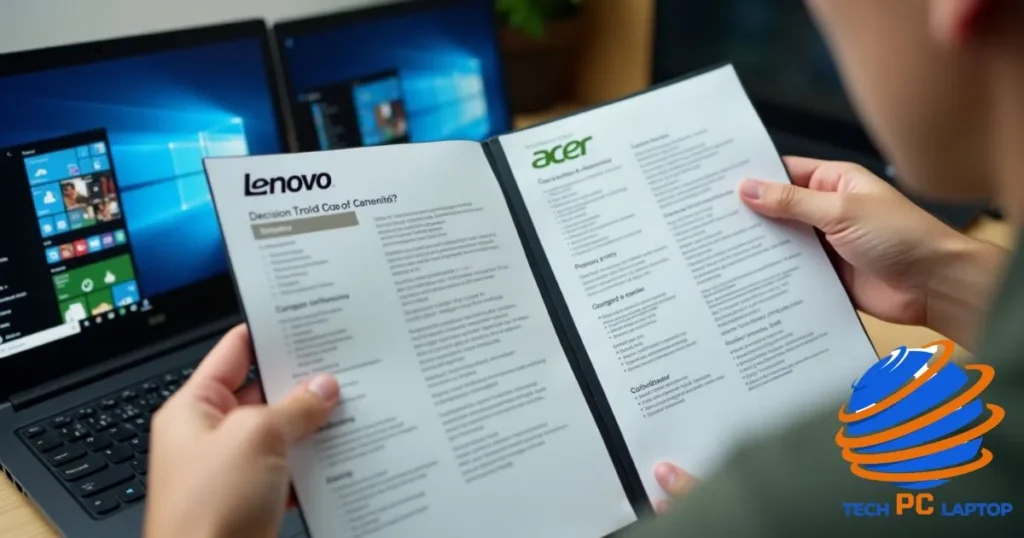
With so many factors to consider, a structured approach to selection helps cut through the marketing.
Decision Framework
Consider prioritizing these factors based on your specific use case:
- Primary usage: Productivity, gaming, content creation, or general use
- Mobility needs: Weight, battery life, and durability for transport
- Performance requirements: Processing power, graphics capabilities, and RAM
- Build quality expectations: Material quality and expected lifespan
- Budget constraints: Initial investment and total cost of ownership
General recommendations by use case:
- Business users: Lenovo ThinkPad for superior keyboard, durability, and security
- Gamers on a budget: Acer Predator for competitive pricing on gaming hardware
- Premium gaming: Lenovo Legion for better thermal management and build quality
- Students: Acer Aspire or Chromebooks for affordable productivity
- Content creators: Lenovo Yoga or Acer ConceptD depending on specific needs
- General users seeking value: Acer Swift or Aspire lines offer good specifications at competitive prices
- Premium ultraportable: Lenovo Yoga or ThinkPad X1 for superior build quality and battery life
Current Standout Models (2025 Edition)
Best Overall Laptops:
- Lenovo: ThinkPad X1 Carbon Gen 13 – Outstanding keyboard, display, and battery life in an ultralight package
- Acer: Swift Edge – Exceptional display quality and performance in a remarkably lightweight chassis
Best Value Picks:
- Lenovo: IdeaPad Slim 5 – Well-balanced performance and features at a mid-range price
- Acer: Aspire 5 – Competitive hardware specifications at an accessible price point
Category Winners:
- Gaming: Lenovo Legion Pro 7i for premium performance; Acer Predator Helios for value
- Business: Lenovo ThinkPad T14s for mainstream business; Acer TravelMate P6 for budget business
- Budget: Acer Aspire 3 for Windows users; Lenovo Chromebook Duet for Chrome OS users
- Creator: Lenovo Yoga 9i for versatility; Acer ConceptD 7 for raw performance
Conclusion: There’s No Single Winner
The Lenovo vs Acer debate has no universal answer—the right choice depends entirely on your specific needs, preferences, and budget.
Lenovo excels in build quality, keyboard comfort, and longevity, making their devices particularly well-suited to business users and professionals willing to invest in lasting quality. Their ThinkPad and Yoga lines remain category leaders for good reason.
Acer shines in value-oriented computing, offering competitive specifications at lower price points. Their Aspire and Swift lines provide excellent options for budget-conscious buyers, while their Predator gaming lineup delivers impressive performance without premium pricing.
Consider your priorities carefully, and remember that the best laptop isn’t necessarily the one with the highest specifications—it’s the one that best serves your specific needs while respecting your budget constraints.
